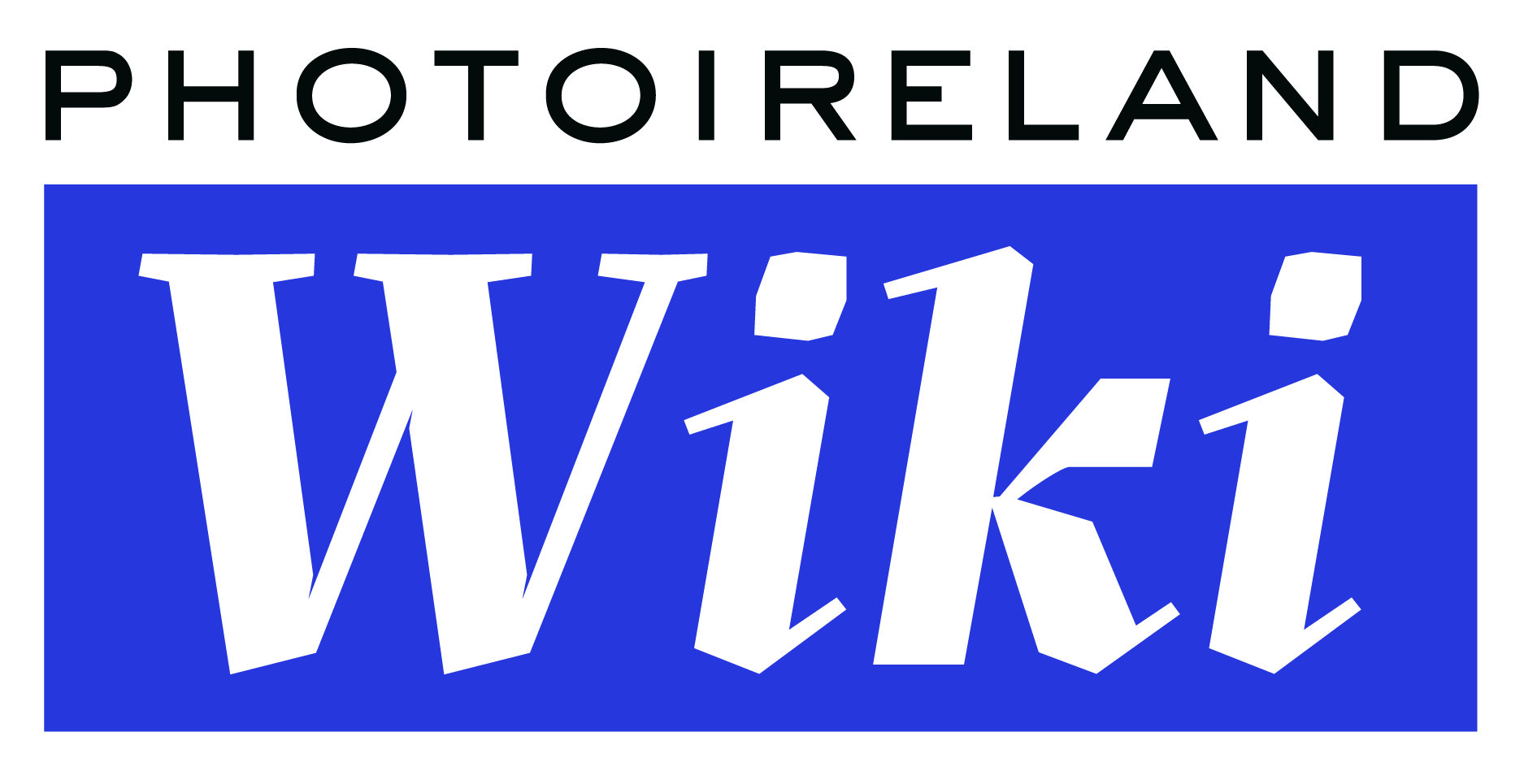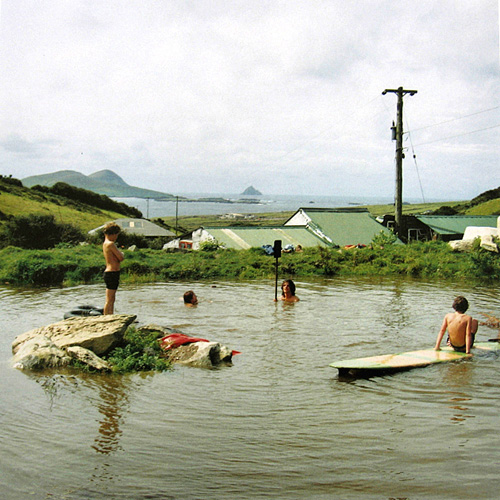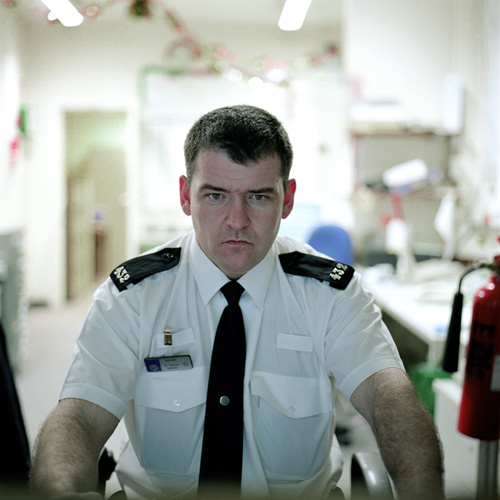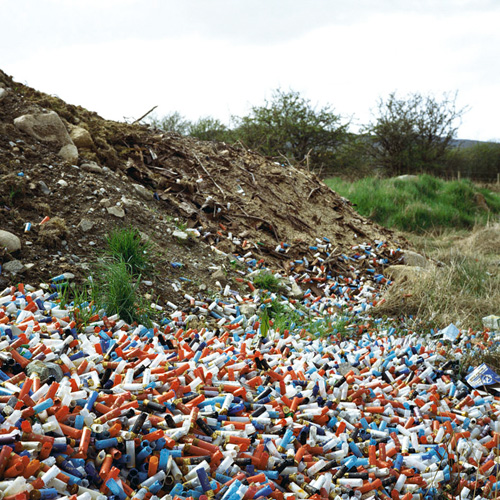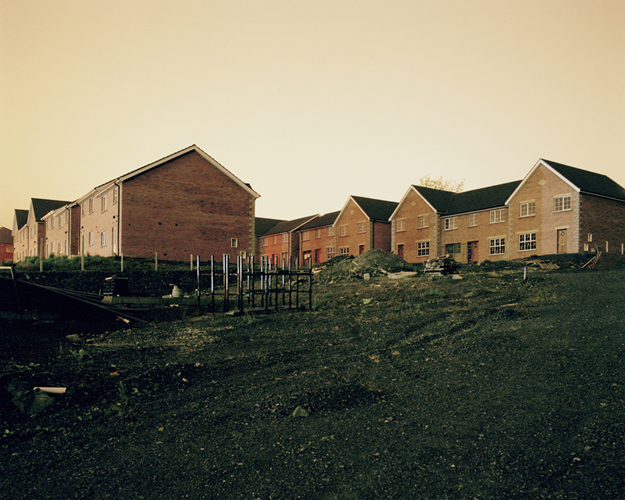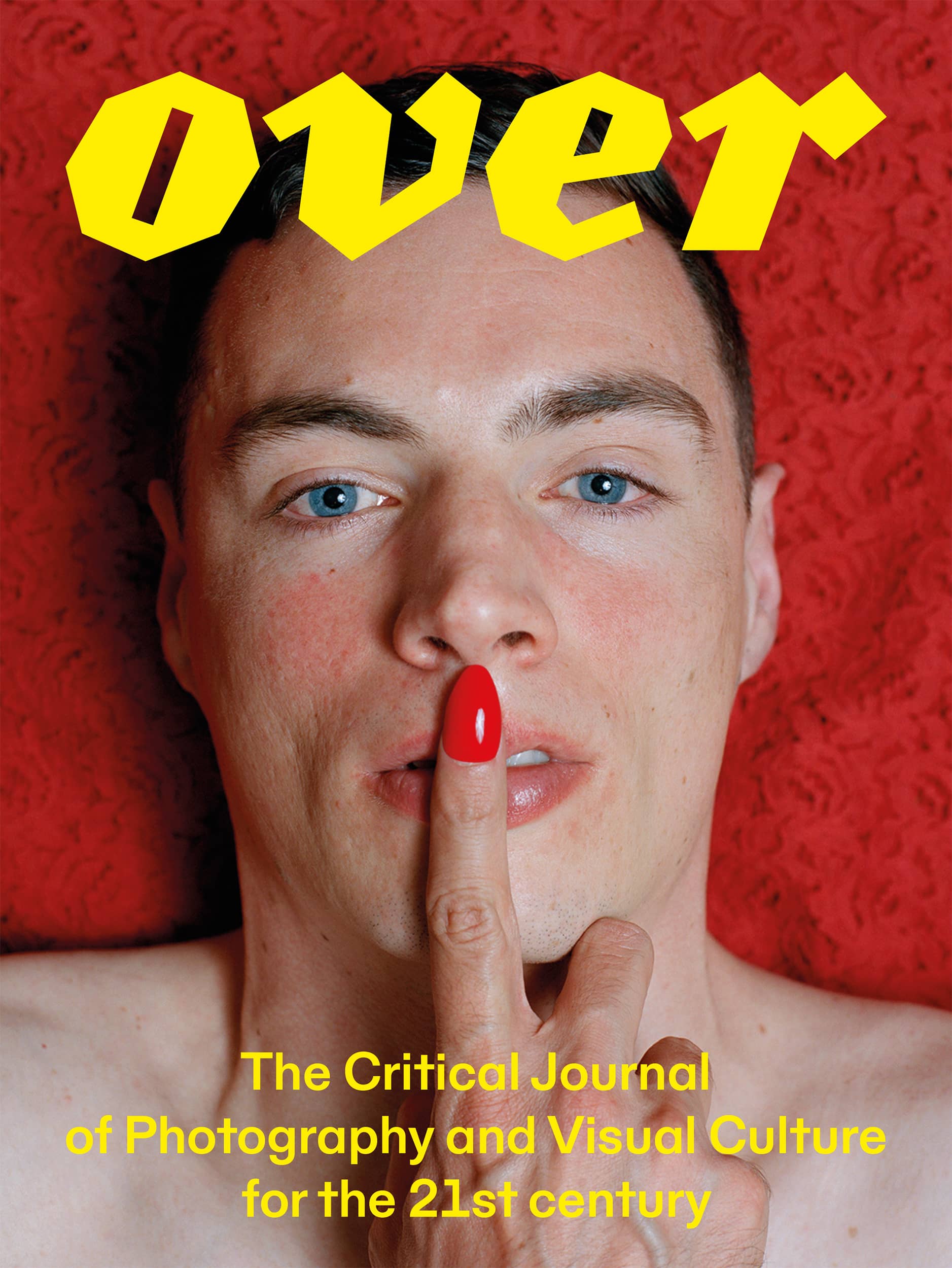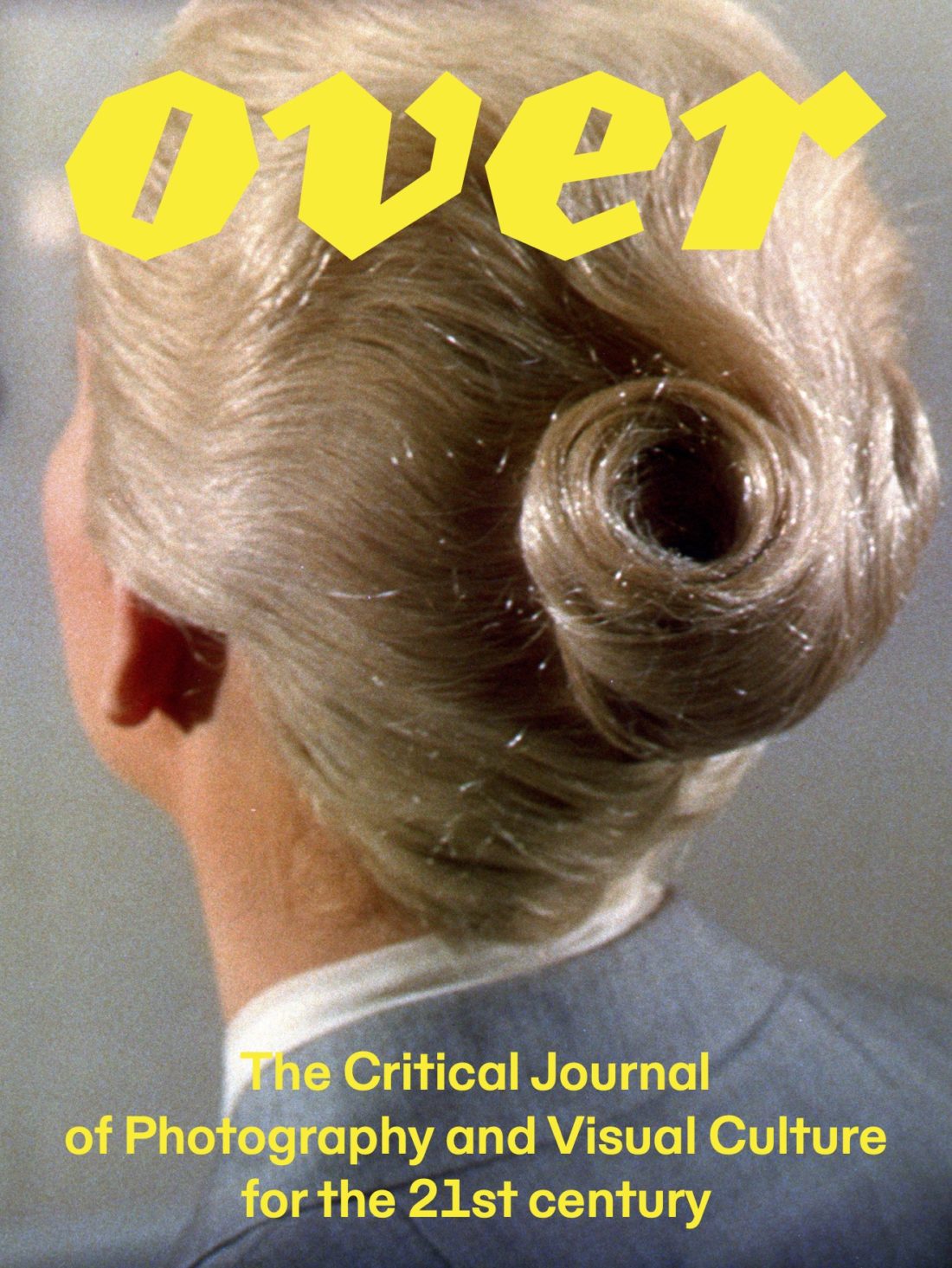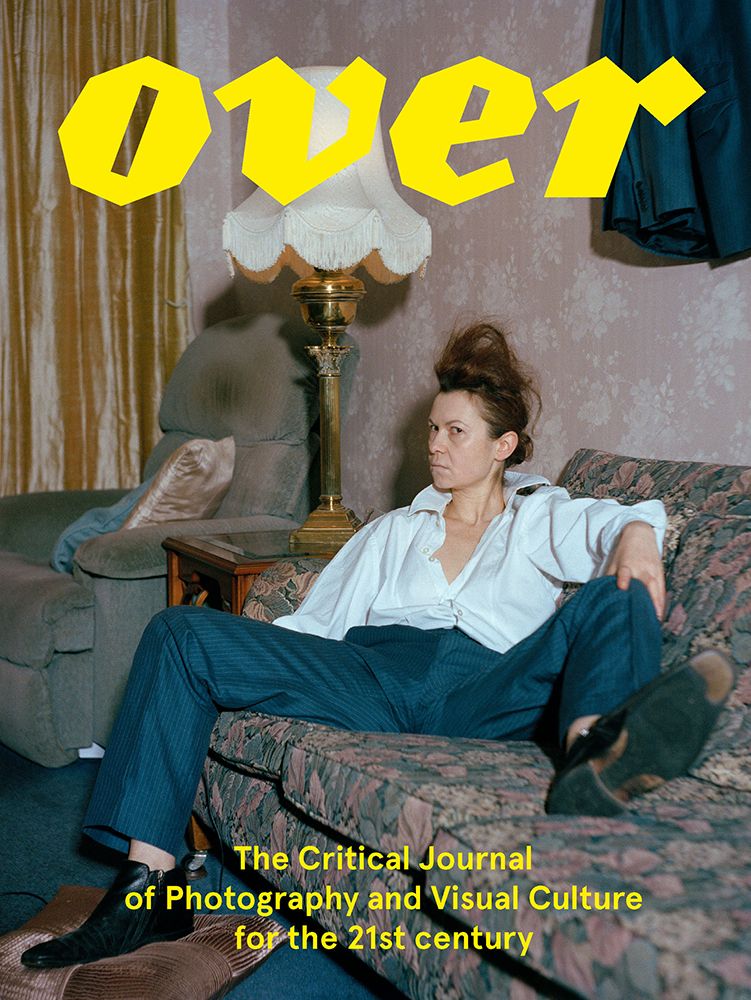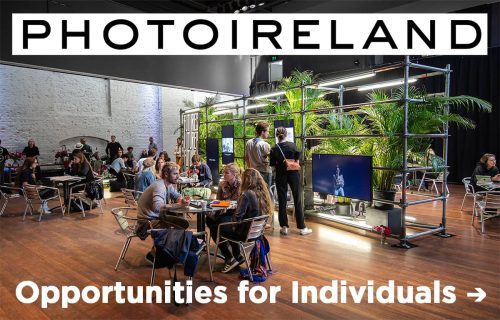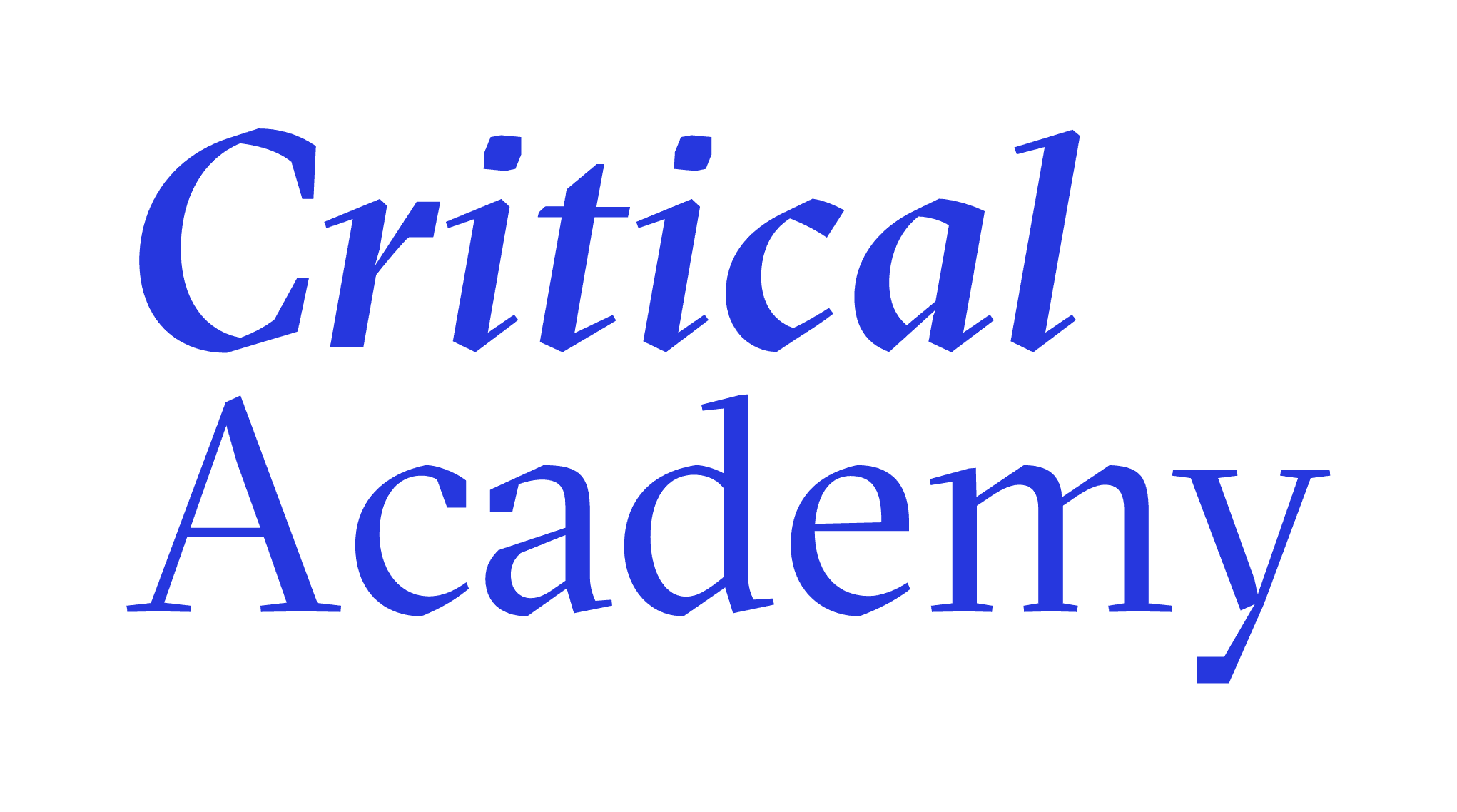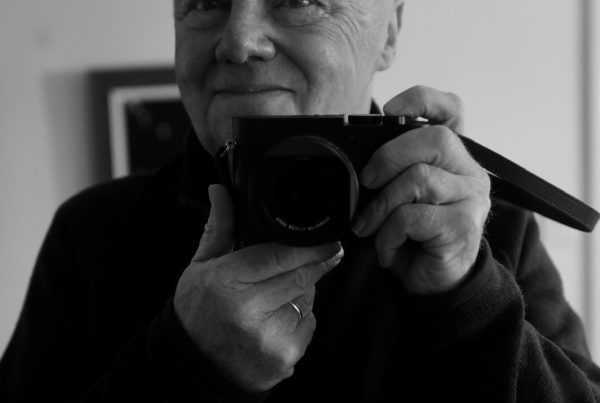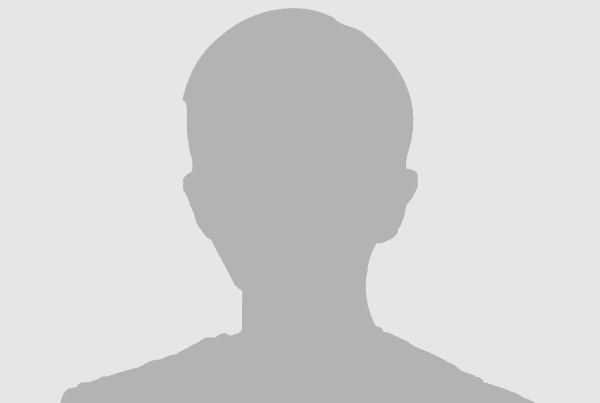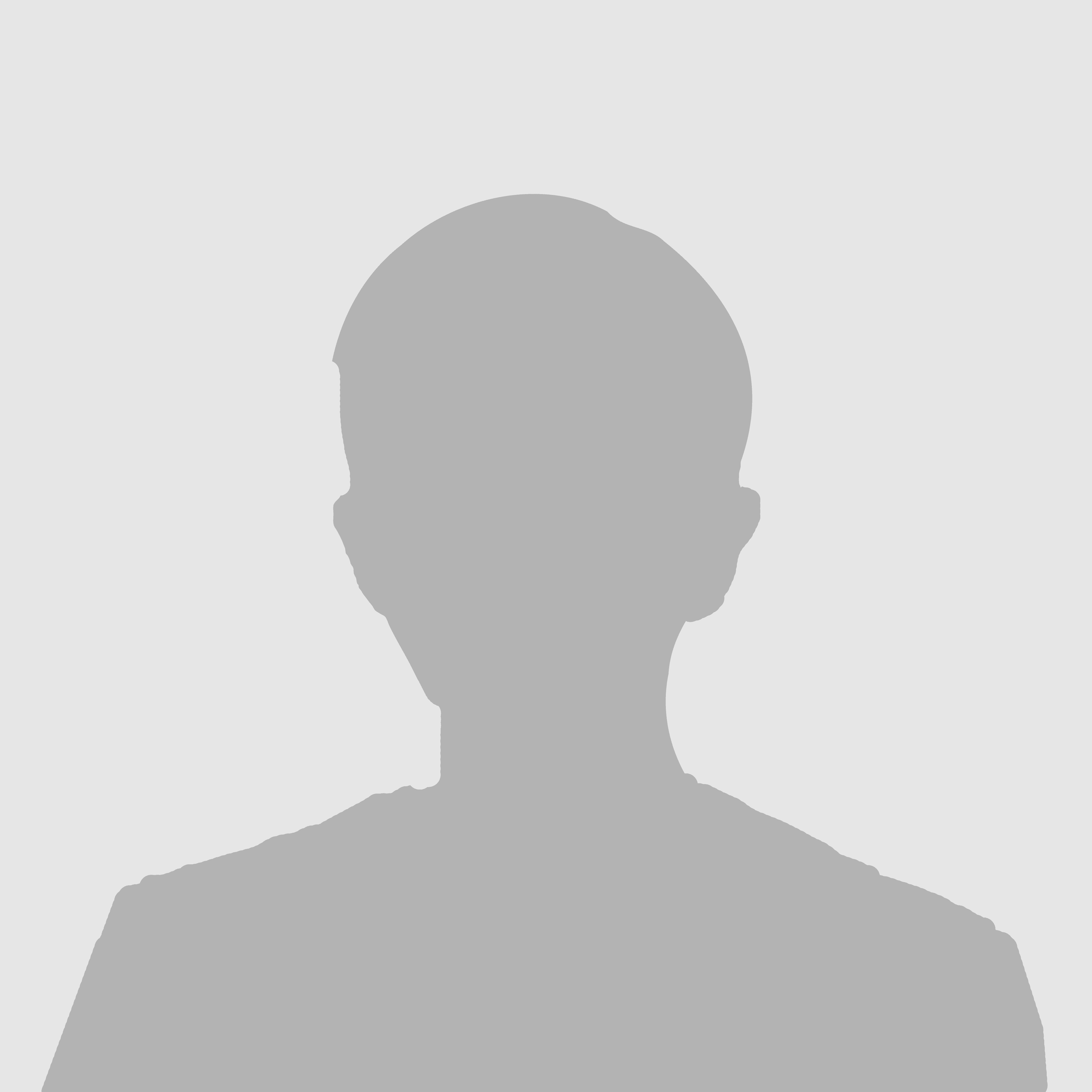
Born 1963 (Keady, Co. Armagh)
Website anthonyhaughey.com
Anthony Haughey lives and works in Ireland. He is an artist and lecturer/researcher in the School of Media at the Technological University Dublin where he is also a PhD supervisor at the Centre for Research in Transcultural Media Practice. He is an editorial advisor for the photographic journal Photographies published by Routledge (London). 1
Bio & Career
Anthony Haughey is an artist and lecturer in the Technological University Dublin where he supervises practice-based PhD’s. He was Senior Research Fellow (2005-8) at the Interface Centre for Research in Art, Technologies and Design in Belfast School of Art, where he completed a PhD in 2009. His artworks and research have been widely exhibited and published nationally and internationally, recent exhibitions include, ‘UNresolved’, video installation, Athens Biennial, ‘The Politics of Images’, Belo Horizonte, Brazil (2017) and ‘Proclamation’ (2016), which toured widely internationally throughout 2016 where he premiered his new video ‘Manifesto’, which was acquired for the permanent collection of The Arts Council / An Chomhairle Ealaíon. Other recent exhibitions include, ‘Uncovering History’, Kunsthaus Graz, ‘Excavation’, Limerick City Gallery, ‘Making History’ and Colombo Art Biennale (2014) as well as a major British Council exhibition ‘Homelands’, touring South Asia. His artworks and scholarly writing has been published in more than eighty publications and his artworks are represented in many important national and international public and private collections. Recent chapter contributions and journal articles include, ‘Imaging the Unimaginable: Returning to the scene of a crime’, Život Umjetnosti art journal, Zagreb, ‘A Landscape of Crisis: Photographing Post Celtic Tiger Ghost Estates’, Canadian Journal of Irish Studies (2017) and ‘Imagining Irish Suburbia’ (Palgrave 2017). He is an editorial advisor for the Routledge journal, ‘Photographies’ and is a board member of Fire Station Artist Studios. He was recipient of Create ‘Arts and Cultural Diversity Award’ (2014) and was lead curator for a major 1916 Commemorative exhibition, ‘Beyond the Pale: The art of revolution’, Highlanes Gallery Drogheda. He was commissioned by Lismore Castle Arts to produce an artwork for the exhibition, ‘The Museum of August Destiny’ (2016-17). He recently exhibited his video installation, ‘UNresolved’ in Argentina, Berlin and Paris and co-curated ‘Forum: Transcultural Dialogues’, Rua Red gallery Dublin (2018). He was recently awarded an ‘Infrastructure’ public art commission by Fingal County Council. 2
Publications
Photography books with contribution by Anthony Haughey
- 2018 ‘A Landscape of Crisis: Photographing post Celtic Tiger ghost estates’, Canadian Journal of Irish Studies.
- 2017 ‘Post Picturesque: Photographing Ireland’, catalogue, Perlman Museum, Northfield, Minnesota.
- 2016 ‘Landskrona Foto View Ireland, exhibition catalogue, Landskrona Museum, Sweden.
- 2016 ‘Imaging the Unimaginable, Život Umjetnosti art journal, Zagreb
- 2015 Pat Cooke feature on the economic crisis and Irish art featuring artists, Anthony Haughey and Deirdre Power in ‘Crisis What Crisis’, Etudes Irlandais.
- 2015 ‘Landscape, Construction of a Reality’, exhibition catalogue, Kunsthaus Graz.
- 2015 ‘Art and Architecture of Ireland Volume V: Twentieth Century’.
- 2014 ‘Aftermath’, Diversity Challenges, N. Ireland.
- 2014 Art and Activism, Fire Station Artists Studios, Dublin.
- 2013 ‘Irish Art Since 1910’, ed. Fionna Barber, University of Chicago Press.
- 2013 ‘Source Photographic Review’, issue 74, Spring 2013.
- 2011 ‘State’, artist’s book with German artist, Susanne Bosch (published by Project Arts Centre, Dublin).
- 2011 ‘Photography and Ireland’, Justin Carville, Reaktion Books.
- 2011 ‘Settlement’, a series of photographs investigating Ireland’s ghost estates, Source Photographic Review, January 2011.
- 2011 Bell, V. ‘Contemporary Art and Transitional Justice in Northern Ireland: The Consolation of Form’, in the Journal of Visual Culture, London: Sage.
- 2010 ‘Dislocations: Participatory Media with Refugees in Ireland and Malta’, in Goodnow, K and Skartveit, H L. (eds) Changes in Museum Practice New ‘Media and Refugees: Forms and Issues of Participation’, Berghahn.
- 2009 ‘Encounter: Dublin, Lisbon, Hong Kong and Seoul’, pub. Soeul: Korea Foundation Cultural Center.
- 2009 ‘Portfolio’ Arno Gisinger et Anthony Haughey, texte d’Etienne Hatt. Infra Mince, revue de photographie No. 5, Paris: Actes Sud.
- 2009 Arno Gisinger, Anthony Haughey, galerie Aréna, École Nationale Supérieure de la Photographie, Arles, Semaines no. 17, Semaine 26.09, Paris: les presses dureel.
- 2008 Singapore International Photography Festival catalogue.
Awards and honours
- 2018 ‘Infrastructure’ Public Art Award, Fingal County Council
- 2016 Arts Council Project Award
- 2014-17 Culture Ireland Awards
- 2014 Create, National Agency for Collaborative Arts Intercultural Award
- 2005-8 PI University of Ulster
Exhibitions
Solo exhibitions
- 2016 ‘Manifesto’, video installation, New York, Paris, Brussels, London and Dublin.
- 2015 Excavation, Limerick City Gallery of Art, Limerick, Ireland.
- 2013 Aftermath, (touring) County Museum Dundalk, Gallery of Photography Dublin, Sean Hollywood Arts Centre Newry, Belfast Exposed Gallery
- 2013 Citizen, Highlanes Gallery, Drogheda and Millennium Court Gallery, Portadown, Northern Ireland
- 2013 Strike! a season of artist curated films depicting 100 years of workers resistance, Limerick City Gallery of Art.
- 2012 Settlement, installation, Belfast Exposed Gallery, Belfast, Northern Ireland
- 2012 Landschaften, Kunstlerhaus S11, Solothurn, Switzerland.
- 2011 Settlement, The Copper House Gallery, Dublin.
- 2010 Prospect, video projection, TULCA 10 Festival of Contemporary Art, Galway, Docks Shed, with Francis Alys and Marjetica Potr.
- 2010 Guest | Prehistory of the Crisis ll, screening, Crawford Art Gallery, Cork, Ireland
- 2009 Prospect, Gallery of Photography, Temple Bar, Dublin, Ireland.
- 2009 Class of 73’, installation, Gallerie Arena, Les Rencontres d’Arles 09, Arles, France.
- 2008 How to be a Model Citizen, Intervention in the Atrium, Civic Offices, Wood Quay, Dublin, Ireland.
- 2007 Destroying the Archive, Borderlines, part of Consensus Contention, University of Ulster Gallery, Belfast.
- 2007 Resolution, multi-media installation and part of the permanent collection of, Wolverhampton Art Gallery.
- 2007 How to be a Model Citizen, video installation, part of Search for a Space at the Marsa Open Centre for Refugees, Malta, supported by the British Council.
Group exhibitions
- 2018 Reframing the Border, RCC, Letterkenny, Donegal and Gallery of Photography, Dublin.
- 2018 An Act of Hospitality can only be Poetic, Highlanes Gallery, Drogheda, Ireland.
- 2017 ‘The Politics of Images’, Belo Horizonte, Brazil.
- 2017 ‘Post Picturesque: Photographing Ireland’, Perlman Museum, Northfield, Minnesota.
- 2017 ‘Post Picturesque: Photographing Ireland’, Rochester Arts Center, Minnesota.
- 2017 ‘Museum of August Destiny’, Pearse Museum, Rathfarnham, Dublin.
- 2016 ‘20 Years of Irish Contemporary Art: Four Perspectives’, Pallas Projects, Dublin.
- 2016 Landskrona Foto View Ireland. Landskrona Museum, Sweden.
- 2016 ‘Museum of August Destiny’, St Carthage Hall, Lismore, Co. Waterford, Ireland.
- 2015 Uncovering History, Camera Austria, Graz, Austria.
- 2015 Motivational Deficit, Crawford Gallery, Cork., Ireland
- 2015 Soundings, dlr Lexicon Gallery, Dun Laoghaire, Ireland.
- 2014 Disputed Territory, Colombo Art Biennale, Sri Lanka.
- 2014 Homelands, British Council touring exhibition, Colombo Art Biennale, Sri Lanka.
- 2014 Art of The Troubles, Ulster Museum, Belfast, N. Ireland.
- 2014 Reframing the Domestic in Irish Art, Highlanes Gallery, Drogheda, Ireland.
- 2013 Upending, Limerick City Gallery of Art, Limerick, Ireland.
- 2013 A Letter to Lucy, Pallas Studios, Dublin.
- 2013 Labour and Lockout, Limerick City Gallery of Art, Limerick, Ireland.
- 2013 Homelands, a 21st Century story of home, away and all the places in between, Contemporary art from the British Council collection, touring S. Asia.
- 2013 New Irish Landscapes, Three Shadows Photography Art Centre, Beijing, China.
- 2012 Sense of Place, European Landscape Photography, Palais des Beaux Arts de Bruxelles.
- 2012 No Exit – Urban Space, Helsinki Photography Biennial City Museum, Hakasalmi Villa.
- 2012 Troubling Ireland, poster campaign, and keynote, Future State of Ireland, Goldsmiths, University of London.
- 2011 The Long View, Contemporary Irish Photography, touring exhibition
- 2011 Heaven and Earth, Anthony Haughey and Jackie Nickerson, New York Photography Festival, USA.
- 2009 Encounter: Dublin, Lisbon, Hong Kong and Seoul, Korea Foundation Cultural Center, Seoul, Korea.
- 2009 Prospect, a 2 channel video installation, part of ISEA 09, Belfast, Northern Ireland.
- 2009 Prehistory of the Crisis ll, Project Arts Centre, Temple Bar, Dublin.
- 2008 30, Contemporary Collection, Gallery of Photography, Temple Bar, Dublin.
- 2008 Art, Media and Contested Space, public art billboard project, Belfast, N. Ireland.
- 2008 Novosibirsk International Photography Festival, Novosibirsk Museum, Siberia (touring).
- 2008 Prospect, video installation, 2MOVE: Ireland, Mieke Bal and Miguel Hernandez-Navarro, Solstice Gallery, Navan, Ireland .
- 2008 Disputed Territory, Singapore International Photography Festival, Singapore.
- 2008 Class of 73, installation, Children in Conflict, Wolverhampton Art Gallery (touring), Wolverhampton, UK.
- 2007 How to be a Model Citizen, video installation, part of the exhibition Rigor Mort, Basement Gallery, Dundalk, County Louth.
- 2007 Resolution, multi-media installation and part of the permanent collection of, Wolverhampton Art Gallery, Wolverhampton, UK.
- 2007 De l’Europe, Dudelange steelworks, CNA Luxembourg, major exhibition representing ten years of Mosaique Research Award.
Projects
- Citizen (2013)
The border has been documented and defined culturally in literature, art and filmic representations. Yet it is easy to forget that the border is also an international boundary. There are no fences or passport control; a more subtle and pervasive form of surveillance is used instead. For migrants, the border is part of ‘Fortress Europe’ where they are subjected to the vagaries of European immigration policies. Borders and transnational migration has been a major theme of Haughey’s art practice for more than twenty-years. Although his work has encompassed a wide range of subjects, he has continually returned to this on-going investigation of what Saskia Sassen describes as ‘informal citizenship’, where migrants contest the right to move freely across borders in search of a better life. The movement of people across continents, seas and oceans is no longer fixed to a specific sense of place; migrants exist in-between states, attempting to negotiate citizenship with reluctant hosts. Despite the current economic crisis, migration is a global phenomenon that is here to stay. Haughey has worked collaboratively with individuals and groups who have left their countries of origin in the most urgent of times, many are living in temporary Reception Centre’s such as Mosney, a former Butlin’s Holiday Camp near Dublin for more than seven-years. Others are living on the periphery of European cities, near harbours in derelict buildings and squatter camps, and in forests behind six-metre high razor wire fences in North Africa waiting for an opportunity to enter Europe through the Spanish enclaves of Cueta and Melilla. Migrants are variously described by as refugees, asylum seekers, illegal aliens and sans papiers, stateless figures relegated to new spaces described by Giorgio Agamben as ‘camps’ or non-spaces located within state boundaries, and yet outside. The camp is a ‘space of exception’ within and without national space, where rights afforded to citizens of the state are suspended.3
- Labour and Lockout (2013)
The project documents a 272 day strike by workers of Lagan Brick Factory in Co. Cavan, which closed in 2011 due to the collapse of the construction sector. Although redundancy payments were eventually awarded, the workers’ names and years of service displayed in horizontal uniformity across the gallery wall attested to a greater communal loss concealed beneath the modest victory. Some of the last red bricks produced at the factory were displayed by Haughy, inscribed with words such as ‘justice’ ‘equality’ and ‘trust’, providing an optimistic commentary on the solidarity of struggle emerging out of horizontal formations. The remnants of post-industry are further explored by Sean Lynch in his ongoing ‘DeLorean Progress Report’, recording the aftermath of the former DeLorean car manufacturing factory in Belfast.In tracking the financial paper-trail, the defunct transportation vessels, and the scrapped, lost or re-appropriated fabrication tooling, this most recent incarnation of Lynch’s inquiry occupied the gallery floor, with cables and car-parts strewn around, and a small portable T.V perched on an upturned log, as it might appear in some fella’s garage.Also utilising auto-parts, Seamus Farrell’s ‘Agri-culture’ (2013) presented the windscreen of a tractor, which was driven to Ireland (pulling a caravan) over twenty years ago by a Dutchman who settled here with his family. Farrell engraved the glass with a harp and an Irish passport, memorialising a seemingly borderless Europe.4
- Settlement (2011)
Throughout Ireland’s so called ‘Celtic Tiger’ years the country witnessed dramatic economic and cultural changes and unprecedented growth. This new body of photographic and video work documents the effects of economic growth on both the shifting population demographic and the physical environment. In the past 15 years a new multicultural society has emerged. The population has shifted from a 99% indigenous monoculture to 10% “new Irish”. Migrant workers, asylum seekers and refugees from more than one hundred countries migrated to Ireland during the boom years in search of a better life. This series explores the effects of economic growth on the natural landscape. Even in the smallest rural villages and towns private developers and credit rich individuals availed of favorable government tax breaks and laissez faire planning legislation to hastily build domestic housing estates for quick profit and to meet the demands of a growing population. All the photographs in this series are produced between sunset and sunrise, partly to avoid any potential confrontation with security guards who regularly patrol these sites during the daytime. The combination of darkness, artificial light and long exposures draws attention to the effects of development on the natural environment by reducing each photograph to the key elements of land and manmade constructions. The natural landscape has been disturbed by earth moving machinery generating artificial hills and valleys in front of half built or unoccupied dwellings. Slowly, nature has started to reclaim the exposed landscape. With the collapse of Ireland’s ‘Celtic Tiger’ economy, more than fifteen years of growth suddenly ended. The banks foreclosed on developer’s loans, all building projects across the state ceased. This resulted in ‘ghost estates’ and unfinished ‘one off houses’ standing isolated in former picture postcard landscapes. During 2010 the National Institute for Regional and Spatial Analysis estimated that there are currently more than 620 ‘ghost estates’ and thousands of empty houses throughout Ireland. These eerie ‘monuments’ are a testament to the end of Ireland’s gold rush and the resulting cost of unregulated growth. 5
- Your History is Our History (2011)
The increasing legislation and controls exerted upon migrants also affect those who hold national citizenship. We are all subjected to increasing surveillance, biometric measuring and restriction or exclusion from crossing international boundaries. Therefore, the erosion of citizen’s rights is inextricably bound with global migration policies.
In 2010, the Danish curatorial collective Kuratorisk Aktion was commissioned by the Fire Station Artists’ Studios in Dublin to frame and convene a think tank for artists and curators in Ireland. Drawing on their expertise and experience in social, political and cultural activism, and in colonialism and postcolonialism, Kuratorisk Aktion conceived the idea of ‘troubling’ Ireland. The think tank would provide a critical, aesthetic and discursive platform for socially engaged practitioners in which received notions of Irish identity, history and politics, and Ireland’s relationship to global capitalism, would be probed and unravelled. The chosen participants were Gareth Kennedy and Sarah Browne (as collaborative partnership Kennedy Browne), Anthony Haughey, Anna Macleod, Augustine O’Donoghue, Susan Thomson and Helen Carey.6
- Class of ’73 (2009)
The largely ethnic Albanian Vaso Pashe Primary School in Pec near the Montenegro border had been used as a barracks by Serbian paramilitary forces between February and June 1999 during NATO bombing raids. Returning to Ireland the photograph was archived and forgotten about but, almost two years later, I came across it in again in my studio and was struck by its significance. In September 2001 I returned to Kosovo and revisited the repaired Vaso Pashe Primary School, where I showed the damaged photograph to the teachers; during the discussion that followed, the historical and symbolic resonance of this violated photograph emerged. The school headmaster had taken the photograph in 1973; he was an enthusiastic amateur photographer and printed the photograph himself in the school darkroom. It lay undisturbed in the school classroom for more than thirty-years, until contesting ethnic identities in Bosnia and Kosovo finally erupted in conflict. Working with the artist the teachers circulated copies of the photograph within the Pec community and accessed school records in an attempt to reveal the identity and fate of each of the pupils. Looking into the barely recognizable faces of the children in the photograph one is reminded of the Soviet Union in the Stalinist era, when the faces of prominent political figures were erased from history.
The spectator immediately speculates why the children’s faces have been scratched out? Was it an unconscious act of boredom perpetrated by an off-duty soldier, or was it a deliberate act of representational ‘ethnic cleansing’? The photograph was rescued from obscurity and subjected to a transformative process to reveal ‘hidden histories’. As Walter Benjamin comments, ‘articulating the past historically does not mean recognizing it “the way it really was”. It means appropriating a memory as it flashes up in a moment of danger’. This appropriated photograph became a powerful metaphor for ethnic contestation and cyclical historical conflict.7
- How to be a Model Citizen (2009)
How to be a Model Citizen is the culmination of a three-year partnership between artist, Anthony Haughey and the Global Migration Research Network – a group of diverse individuals who came to live in Ireland (north and south) during the recent economic boom. Exploring often contentious issues relating to citizenship and contested spaces, the group has worked together and individually with the artist over the last three years in Malta, North Africa, and Ireland. Together they have produced a number of dialogical art and media projects: installations, exhibitions, video works, television broadcasts and intercultural public discussions. Setting up a temporary space within the Atrium of the Civic Offices, the Global Migration Research Network will invite visitors to test their knowledge of citizenship by posing a series of questions in relation to democratic institutions and civic society in Ireland. The group will simultaneously research these questions online in relation to the process of becoming a citizen in Ireland and elsewhere. Key video works from earlier collaborations will also be shown. The group’s findings on this occasion were included in a book published in March 2009, designed in collaboration with Detail Design Studio, Dublin.8
- Postcards from Mosney (2006)
Postcards from Mosney was an intervention produced for the exhibition Migrations at Belfast Exposed Gallery during the summer of 2006. Mosney Reception Centre is a former Butlins Holiday Camp located 30 miles from Dublin. It was visited by thousands of Irish and UK holidaymakers every year until its eventual closure in 2000 when it became a holding centre for approximately 700 “asylum seekers” from more than 50 countries. 9
- Monitor (n.d.)
Monitor, reflects upon the surveillance industry, an established global practice perceived as a method to maintain law and order, protect private property and prevent terrorism. It is estimated that there are 4.2 million CCTV cameras in the UK alone. CCTV surveillance is the overt manifestation of a far wider and covert ‘Surveillance Society’. The principals of CCTV technologies can be traced historically to Jeremy Bentham’s architectural blueprint for the ‘Panopticon’ or ‘The Inspection House’ (1791) which was originally proposed for the design of asylums and prisons. The ‘all-seeing eye’ of Bentham’s Panopticon later became the photomechanical eye of the camera, the device par excellence for ‘permanent visibility’.
In the process of making this series of photographs the vantage point of each CCTV operator has been interrupted by placing a camera between the observer and the observed (between the operator and a bank of monitors h/she must constantly scan, searching for ‘suspicious behaviour’. In each photograph the surveillance operator stares directly out of the frame to a point beyond the viewer, the gaze is uncomfortable. I am reminded of ‘police mug shots’ where the subject is exposed to the scrutiny of the viewer.10
- The Edge of Europe (1996)
Anthony Haughey’s series of colour photographs are an evocative portrayal of the complex relationship between the West of Ireland, its landscape and people, and Irelands Diaspora on the East Coast of America. The Western Edge of Europe is a changing world where politics, history and economic hardship have forged the foundations of deeply rooted communities and enriched them with a fluent aural and musical culture. Haughey’s focus on the Great Blasket Island and the depopulated landscapes of western Ireland explores links with the past and vestiges of Irish Culture, and he challenges the populist notion of an Irish cultural Disney Land. Ireland’s Diaspora, the largest single population movement of the 19th century, has created huge global network of people claiming to be of Irish origin. The United States has become a home to millions of Irish people, a symbol of hope and economic freedom to many, whilst retaining unbreakable family ties with their homeland. In the last US census, forty million people claimed Irish ancestry.11
Works
- The Edge of Europe (1996)
- Monitor
- Shotgun Cartridges, Armagh/Louth Border, Disputed Territory (2006)
- Settlement (2011)
- Lor Lor, Entrance to Former Butlin’s Mosney Holiday Camp Ballroom, Mosney Reception Centre (2006)
- Warsame and Shrukri (2010)
External links & References
- “Anthony Haughey”, The Copper House Gallery, 2019, https://www.thecopperhousegallery.com/m/artists/37-anthony-haughey/biography/.
- “Info”, Anthony Haughey, 2019, http://anthonyhaughey.com/info/.
- “Citizen: 2013 | Anthony Haughey”, Anthonyhaughey.Com, 2013, http://anthonyhaughey.com/citizen-2013/.
- Laws, Joanne. “‘Labour And Lockout…’, Limerick City Gallery Of Art, Visual Artists’ News Sheet, Nov/Dec 2013”. Joanne Laws, 2013. https://joannelaws.com/2013/11/01/review-labour-and-lockout-limerick-city-gallery-of-art-9th-august-1st-october-2013-visual-artists-news-sheet-novdec-2013/.
- “Settlement | Anthony Haughey”, Anthonyhaughey.Com, 2013, http://anthonyhaughey.com/projects/settlement/
- “Your History is Our History | Anthony Haughey”, Anthonyhaughey.Com, 2013, http://anthonyhaughey.com/projects/your-history-is-our-history/
- “Class of ’73 | Anthony Haughey”, Anthonyhaughey.Com, 2013, http://anthonyhaughey.com/projects/class-of-73/
- “How To Be a Model Citizen | Anthony Haughey”, Anthonyhaughey.Com, 2013, http://anthonyhaughey.com/projects/how-to-be-a-model-citizen/
- “Postcards from Mosney | Anthony Haughey”, Anthonyhaughey.Com, 2013, http://anthonyhaughey.com/projects/postcards-from-mosney/
- “Monitor | Anthony Haughey”, Anthonyhaughey.Com, 2013, http://anthonyhaughey.com/projects/monitor/
- “The Edge of Europe | Anthony Haughey”, Anthonyhaughey.Com, 2013, http://anthonyhaughey.com/projects/the-edge-of-europe/
